 Sughra Raza. Rorschach on the River Li. Yangshuo, China, January, 2020.
Sughra Raza. Rorschach on the River Li. Yangshuo, China, January, 2020.
Digital photograph.
by Anitra Pavlico
My experience is what I agree to attend to. —William James
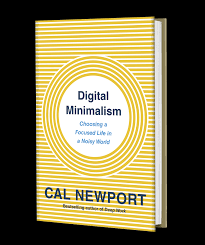 While you might not break into a neighbor’s house to log onto your Facebook account if your internet were down, a case can be made that many of us are victims of at least a moderate behavioral addiction when it comes to our smartphones. At the playground with our kids, we’re on our phones. At dinner with friends, we’re on our phones. In the middle of the night. At the movies. At a concert. At a funeral. (I was recently at a memorial service for my friend’s mother, and someone’s cell phone rang during my friend’s reminiscence.)
While you might not break into a neighbor’s house to log onto your Facebook account if your internet were down, a case can be made that many of us are victims of at least a moderate behavioral addiction when it comes to our smartphones. At the playground with our kids, we’re on our phones. At dinner with friends, we’re on our phones. In the middle of the night. At the movies. At a concert. At a funeral. (I was recently at a memorial service for my friend’s mother, and someone’s cell phone rang during my friend’s reminiscence.)
In his recent book Digital Minimalism [1], Cal Newport argues that we need a philosophy for how to approach the use of digital technology. Ad-hoc measures such as disabling notifications and installing apps that monitor our screen time are missing the point. Instead of working backward from an immersion, Newport says, we should examine our lives without technology first and figure out how technology can serve our values and interests in the least intrusive way. Unlike digital maximalists, who try every new app and gadget and try to shoehorn them into their lives, digital minimalists ruthlessly screen each new tool before using it. Newport portrays maximalism as the technology philosophy that “most people deploy by default–a mind-set in which any potential for benefit is enough to start using a technology that catches your attention.” Read more »
Michelle M. Le Beau, Arthur and Marian Edelstein Professor of Medicine, is a leading authority in hematologic malignancies. Her groundbreaking research led to the identification of the recurring cytogenetic abnormalities in hematological malignant diseases, in defining the clinical, morphological, and cytogenetic subsets of leukemias and lymphomas, and in identifying the genetic pathways that lead to myeloid leukemias. She is currently a member of the Board of Directors of the American Association for Cancer Research, the Leukemia and Lymphoma Society and the American Society of Hematology. Her current research focus is on therapy-related acute myeloid leukemia.
Azra Raza, author of The First Cell: And the Human Costs of Pursuing Cancer to the Last, oncologist and professor of medicine at Columbia University, and 3QD editor, decided to speak to more than 20 leading cancer investigators and ask each of them the same five questions listed below. She videotaped the interviews and over the next months we will be posting them here one at a time each Monday. Please keep in mind that Azra and the rest of us at 3QD neither endorse nor oppose any of the answers given by the researchers as part of this project. Their views are their own. One can browse all previous interviews here.
1. We were treating acute myeloid leukemia (AML) with 7+3 (7 days of the drug cytosine arabinoside and 3 days of daunomycin) in 1977. We are still doing the same in 2019. What is the best way forward to change it by 2028?
2. There are 3.5 million papers on cancer, 135,000 in 2017 alone. There is a staggering disconnect between great scientific insights and translation to improved therapy. What are we doing wrong?
3. The fact that children respond to the same treatment better than adults seems to suggest that the cancer biology is different and also that the host is different. Since most cancers increase with age, even having good therapy may not matter as the host is decrepit. Solution?
4. You have great knowledge and experience in the field. If you were given limitless resources to plan a cure for cancer, what will you do?
5. Offering patients with advanced stage non-curable cancer, palliative but toxic treatments is a service or disservice in the current therapeutic landscape?
by Tim Sommers
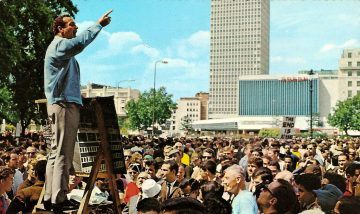
What if most speech is worthless? Or, rather, what if most speech that purports to count as a contribution to “free expression” is mostly worthless? Take the internet. What’s on it? Lots of great information and great journalism and even art. But, also, pornography. Lots of pornography. Between 15% and 80% of net traffic is porn, depending on which study you believe. But if you count semi-nude pictures, it’s got to be at least…well, a lot. Lots of cat pictures, too. Then there are the blogs and comment threads and likes and dislikes. Even where these are about significant topics, most of opinions expressed are repetitive assertions of a fairly narrow range of already well-known opinions. And then there’s the insults, the invectives, and general nastiness. I am not against porn. I am not even against insults per se. What I wonder though is, whatever value porn, for example, has for you, or whatever expressive relief you get from typing insults, should we think that these things ought to count as worthy the high value and high level of protection we ordinarily afford free speech? Maybe. Maybe, not.
There seems to be a lot of agreement that “free speech” is in crisis – on campuses, on the web, or on social media. But not a lot of agreement about what the crisis is supposed to be. There seems to be a lot of agreement that regulating, or interfering in any way, with free speech is bad. But not a lot of discussion of exactly what is bad about it. It sometimes seems that “freedom of speech” is just an empty phrase to be filled in by whatever you happen to think that it would be good not to have interfered with. (Maybe, you’ve encountered the internet joke that suggest you can now argue for anything by saying “what you want to argue for” and then asserting “Because freedom!”) And so, the “crisis” sometimes seems to be just people you don’t like interfering with something you do like. (Have you ever heard of a conservative pundit complaining about a liberal speaker being “de-platformed” or vice-versa?) My point is, unless we engage with what is good or bad about freedom of speech, it’s going to be hard to evaluate what the crisis is and whether we can regulate our way out of it. So, let’s start there. Or, rather, here: What is free(dom of) speech? Read more »
by Brooks Riley
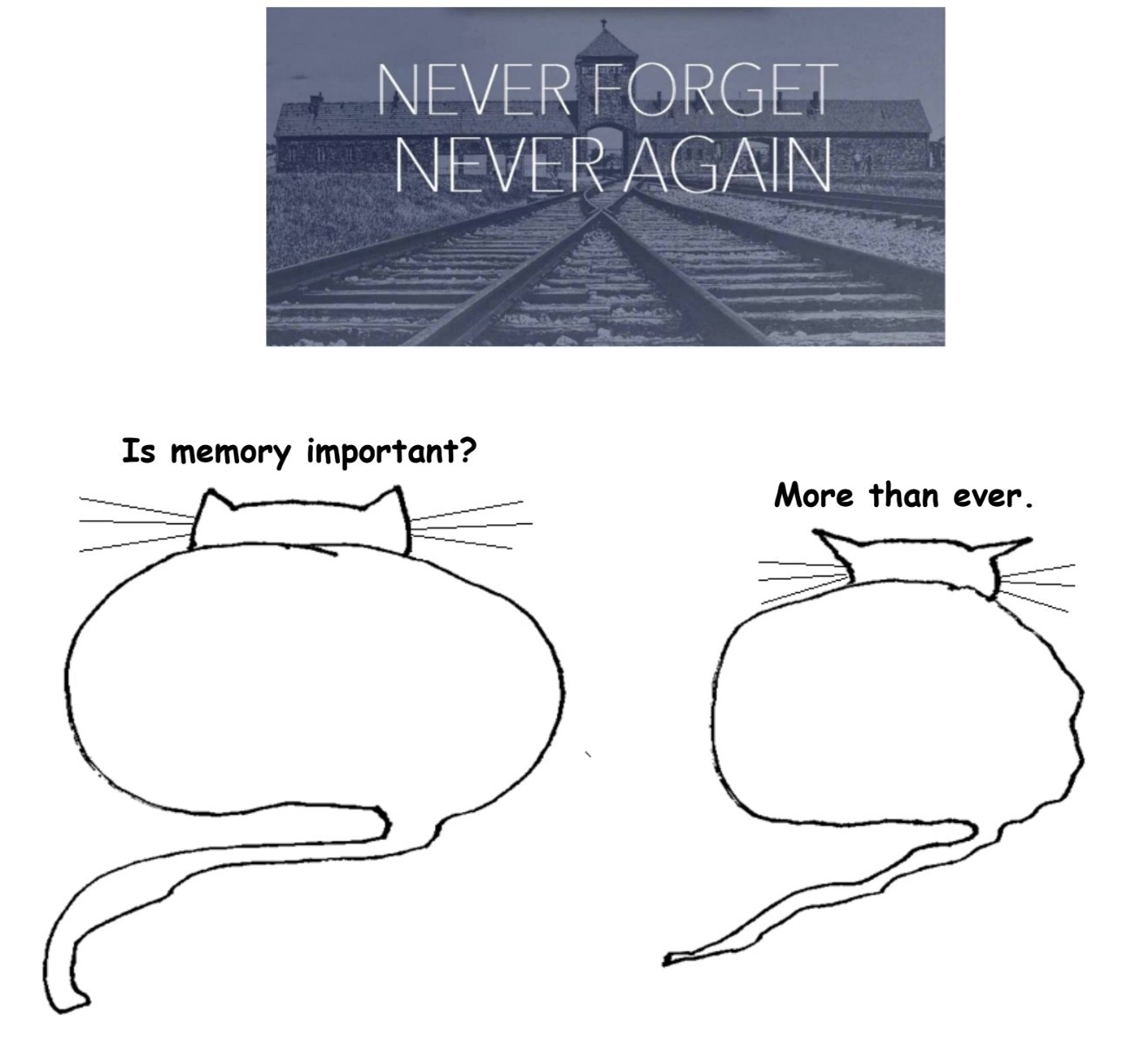
by Brooks Riley
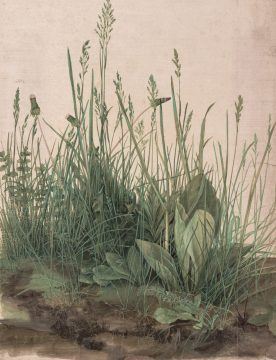 When Vienna‘s Albertina Museum exhibition of works by Albrecht Dürer ended in January 2020, it seemed quite possible that several of the masterpieces on display might never again be seen by the public, among them The Great Piece of Turf. This may sound like a dire prediction for a fragile work that is routinely exhibited every decade or so, but as the UN announced recently, we may already have passed the tipping point in the race to save our world and ourselves. A decade from now we may be too engaged in the struggle to survive to focus our attention on a small, exquisite watercolor created 500 years ago.
When Vienna‘s Albertina Museum exhibition of works by Albrecht Dürer ended in January 2020, it seemed quite possible that several of the masterpieces on display might never again be seen by the public, among them The Great Piece of Turf. This may sound like a dire prediction for a fragile work that is routinely exhibited every decade or so, but as the UN announced recently, we may already have passed the tipping point in the race to save our world and ourselves. A decade from now we may be too engaged in the struggle to survive to focus our attention on a small, exquisite watercolor created 500 years ago.
Up to now, Dürer has been one of the many diversions that have lured me away from thinking about the climate crisis. At this moment in history, when focusing on the future of the planet is required, we are deluged by distractions than didn’t exist 30 years ago when the climate warnings began to escalate. We cram our free time with clickbait high and low, binges of movies and TV shows on streaming platforms, all-you-can-hear on Spotify, endless slide shows, political sideshows, not to mention all the other interests we may have that are accessible via Google or Wikipedia. Online shopping diverts us further, feeding desires ahead of needs. The outcry of scientists and the activism of Time magazine Person of the Year Greta Thunberg have done little to pry us from our pleasures.
The climate crisis will not wait for us to put down our devices and devote serious thought or action to the issue. As a species, we react more to major events than to chronic conditions. The climate crisis is not an event, it’s a slow-rolling inevitability that will play out in differing catastrophic scenarios, to be labeled events only when they occur. Meanwhile, this gathering storm hums along in the background of our lives as we go about business as usual—not unlike death, another inevitability whose faint background noise accompanies us throughout our lives. Read more »
“May our Chinar last a thousand years,”
Grandfather said, clenching a cigar.
“Chi means What, Nar: Fire: What fire!”
Rustling boughs reigned above the tin roof
of our home where I was born a Scorpio
at midnight. It’s Fall. Each leaf burst into
a flower. We gathered the remains of dyes
to create fuel for winter, sprinkling water
on burning leaves, palms brushed ashes
together, packing cinders in a clay pot
matted in bright wicker, his kangri.
“Symbol of our culture,” he said,
cloaking it between his knees under
a loose mantle, his phiran, three yards
of brown houndstooth made by Salama,
the beloved tailor at Polo View, solely
for Grandfather who said the embers
warmed his bones. “We are all bones
under the houndstooth,” my father said.
He’s sun-withered, pouring morning tea
from a samovar alone beside an amputated
trunk. What’s father doing in Kashmir,
have they annulled the Partition?
But he still parts his hair in the center.
A Himalayan glacier ruptured its bank.
Signal towers sunk, our tin roof as well.
My valley was again a lake it used to be.
I was a shikara. I was a crewel curtain
embroidering the shikara I once was.
Barrenness had become a thousand things.
By Rafiq Kathwari / @brownpundit
by Chris Horner
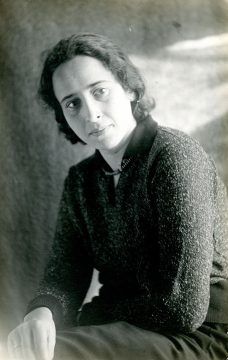
In May 1919 the remains of a woman were fished from the Landwehr canal in Berlin. The three doctors available must have suspected the identity of the corpse, as they refused to perform a post mortem on it. Identification was in any case made by examination of the clothes on the body. This had been Rosa Luxemburg. She had perished essentially because the leftist uprising in Berlin, initiated by her fellow Sparticist leader Karl Liebknecht without her agreement, had failed. Luxemburg, who had fiercely criticised the Bolshevik approach to revolution as dangerously authoritarian was clubbed and then shot to death by members of the Freikorps, whose repressive violence makes them fitting antecedents to the Nazis.
The great revolutions in ‘The West’ are often seen as turning points, thresholds, new stages in history, and their very dates have a kind of resonance: 1776, 1789 (or 1794), 1917, and so on. History, of course, may make us change our minds about the degree of success, the meaning, the import of those events, but they remain potent as symbols, whatever posterity’s judgment may be. And there is a second sequence, of course, that of the failed revolutions: 1796, 1821, 1848, 1871, 1905, 1918, and 1956. These are the abortive revolutions and uprisings. This second list is the longer one, but like the successful ones, judgment about ultimate meaning, including the meaning of ‘success’ and ‘failure’, remain open to revision and reconsideration.
Of the revolutions that never were, it is the one that began in Germany in 1918 that is most relevant to Hannah Arendt. Arendt, born in 1906, married to Heinrich Blucher (an ex Sparticist) has a biography and a set of concerns defined by the fate of Germany after 1918. Rosa Luxemburg’s life and death – including the nature of the regime that connived in her murder – was the subject of an eloquent and moving essay by Arendt and published in Men in Dark Times in 1966. For all her criticism of Rosa Luxemburg’s mistakes, it is clear that she stands as a kind of exemplar for Arendt. If it had succeeded, if some kind of ‘Red’ government has seized and kept hold of power in the 1918-9 period, the effect on Germany, the nascent Soviet State in Russia, and the rest of the world would have been, one assumes, huge. But it failed, and Hitler and Stalin were the successors to that non-event. Read more »
by Akim Reinhardt
Stuck is a weekly serial appearing at 3QD every Monday through early April. The Prologue is here. The table of contents with links to previous chapters is here.
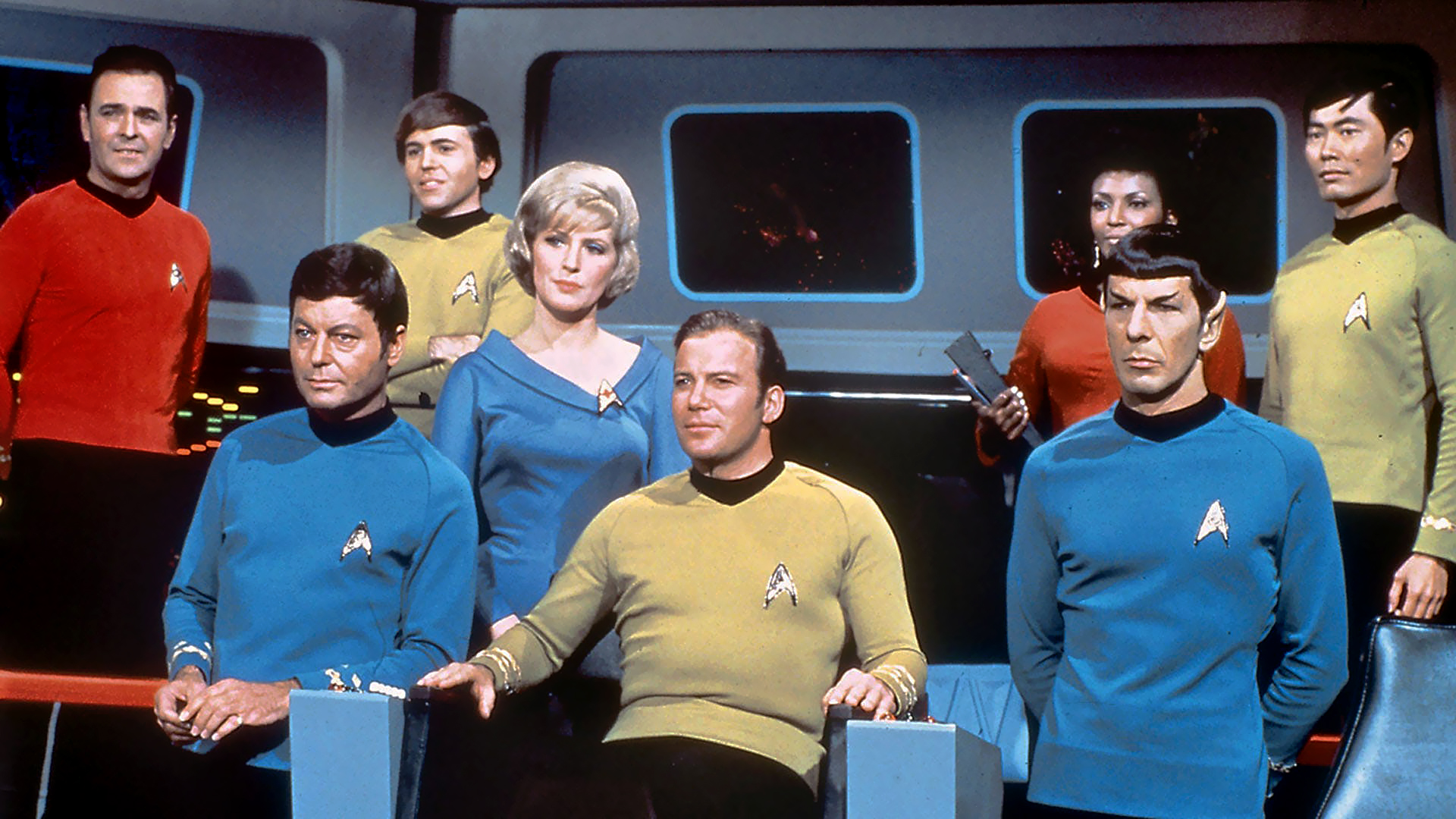 During my late 1970s New York City childhood, repeats of Star Trek aired every weeknight on channel 11, WPIX. The original 79 episodes ran about three times per year, which means that, allowing for the occasional miss, I’d seen each episode about 10 – 12 times before reaching high school.
During my late 1970s New York City childhood, repeats of Star Trek aired every weeknight on channel 11, WPIX. The original 79 episodes ran about three times per year, which means that, allowing for the occasional miss, I’d seen each episode about 10 – 12 times before reaching high school.
And so when I was 14 years old and my friend Erik suggested we attend a Star Trek convention at the Penta Hotel across the street from Madison Square Garden, I jumped at the opportunity. Shit, Leonard Nimoy was gonna be there.
I didn’t really know what to expect as Erik and I rode the bus downtown. But after a half-day traipsing through the convention, I realized there was something going on. It was more than just a bunch of people who really liked Star Trek. Throngs of hardcore fans obsessed over the show’s minutiae, and some even wore Star Trek costumes. I loved the show too, but I felt no sense of kinship with these super fans; in fact, it all made me uneasy.
This was the early 1980s, and the clichés about “Trekkies” were just beginning to develop: men who lacked social skills, couldn’t get a date, and lived in their parents’ basement back when a grown man living with his parents was considered a spectacular failing at adulthood. Today they are derided as geeks or maybe nerds. Back then they were simply losers. Read more »
by Ali Minai
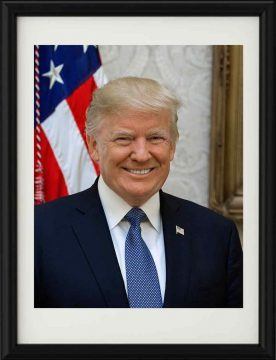 For the last three years, I have struggled with a dilemma: As a reasonable, quite liberal person, what should I think of my 60 million fellow Americans who voted for Donald Trump in 2016, and the vast majority of whom continue to support him today? Normally, a personal dilemma is a private thing, not a topic for public airing, but I feel that this particular problem is one the vexes many others – perhaps even a majority of Americans, as more of us voted for Hillary Clinton and many did not vote at all. Since that bleak day in November 2016, an unspoken – and sometimes loudly spoken – question hangs in the air: What kind of “deplorable” person would vote for Donald Trump?
For the last three years, I have struggled with a dilemma: As a reasonable, quite liberal person, what should I think of my 60 million fellow Americans who voted for Donald Trump in 2016, and the vast majority of whom continue to support him today? Normally, a personal dilemma is a private thing, not a topic for public airing, but I feel that this particular problem is one the vexes many others – perhaps even a majority of Americans, as more of us voted for Hillary Clinton and many did not vote at all. Since that bleak day in November 2016, an unspoken – and sometimes loudly spoken – question hangs in the air: What kind of “deplorable” person would vote for Donald Trump?
By now, it is clear to any reasonably sentient person that Donald Trump is a venal, corrupt, narcissistic individual with no shred of human decency or moral principle. From his first announcement where he called Mexicans rapists and criminals, to the Access Hollywood tape exposing his habit of groping women, the mocking of a disabled journalist, the xenophobic Muslim ban, calling white supremacists “very fine people”, the abduction and caging of innocent children, the destruction of environmental protections, the denial of the climate threat, the shredding of all ethical norms, the open defiance of laws, the appointment of racists and thugs to high office, the pardoning of war criminals, the decimation of government institutions and policies, the betrayal of allies, the subversion of American democracy, the celebration of despots, and blind obedience to Vladimir Putin – and much, much more – everything Trump has done has established him as a person of truly monumental vice. And yet, something like 40% of American voters still support him reliably, including many who have been grievously hurt by his policies and know that they have been hurt. Why? And how should those who cannot stand Trump relate to them? Read more »
by Ashutosh Jogalekar
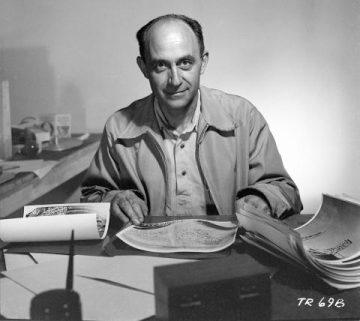 In November 1918, a 17-year-student from Rome sat for the entrance examination of the Scuola Normale Superiore in Pisa, Italy’s most prestigious science institution. Students applying to the institute had to write an essay on a topic that the examiners picked. The topics were usually quite general, so the students had considerable leeway. Most students wrote about well-known subjects that they had already learnt about in high school. But this student was different. The title of the topic he had been given was “Characteristics of Sound”, and instead of stating basic facts about sound, he “set forth the partial differential equation of a vibrating rod and solved it using Fourier analysis, finding the eigenvalues and eigenfrequencies. The entire essay continued on this level which would have been creditable for a doctoral examination.” The man writing these words was the 17-year-old’s future student, friend and Nobel laureate, Emilio Segre. The student was Enrico Fermi. The examiner was so startled by the originality and sophistication of Fermi’s analysis that he broke precedent and invited the boy to meet him in his office, partly to make sure that the essay had not been plagiarized. After convincing himself that Enrico had done the work himself, the examiner congratulated him and predicted that he would become an important scientist.
In November 1918, a 17-year-student from Rome sat for the entrance examination of the Scuola Normale Superiore in Pisa, Italy’s most prestigious science institution. Students applying to the institute had to write an essay on a topic that the examiners picked. The topics were usually quite general, so the students had considerable leeway. Most students wrote about well-known subjects that they had already learnt about in high school. But this student was different. The title of the topic he had been given was “Characteristics of Sound”, and instead of stating basic facts about sound, he “set forth the partial differential equation of a vibrating rod and solved it using Fourier analysis, finding the eigenvalues and eigenfrequencies. The entire essay continued on this level which would have been creditable for a doctoral examination.” The man writing these words was the 17-year-old’s future student, friend and Nobel laureate, Emilio Segre. The student was Enrico Fermi. The examiner was so startled by the originality and sophistication of Fermi’s analysis that he broke precedent and invited the boy to meet him in his office, partly to make sure that the essay had not been plagiarized. After convincing himself that Enrico had done the work himself, the examiner congratulated him and predicted that he would become an important scientist.
Twenty five years later Fermi was indeed an important scientist, so important in fact that J. Robert Oppenheimer had created an entire division called F-Division under his name at Los Alamos, New Mexico to harness his unique talents for the Manhattan Project. By that time the Italian emigre was the world’s foremost nuclear physicist as well as perhaps the only universalist in physics – in the words of a recent admiring biographer, “the last man who knew everything”. He had led the creation of the world’s first nuclear reactor in a squash court at the University of Chicago in 1942 and had won a Nobel Prize in 1938 for his work on using neutrons to breed new elements, laying the foundations of the atomic age. Read more »
by Joan Harvey
The radio music is smooth now, sentimental, semi-classic in the popular vein…music something like a golden bell, promising that tomorrow will be better. Jazz, good jazz, tells no such lies. —Charles Wright, The Messenger
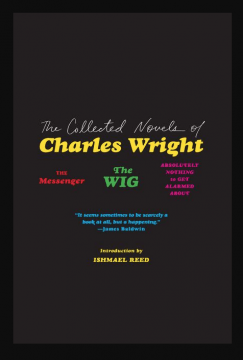
Recently, in an independent bookstore in a city I was visiting, one of the books I randomly scooped up to weigh down my luggage on the way home was The Collected Novels of Charles Wright, with an introduction by Ishmael Reed. The confusing thing was, had I heard of him? It seemed to me that of course I had, but there is a famous American poet named Charles Wright and this is not that man. There was also of course Richard Wright; the first novel in this collection is dedicated in part to him. There’s Charles White, the artist, whose work I happened to see on this same trip. But the Charles Wright of these novels is Charles Stevenson Wright (1932-2008). I later looked this collection up on Amazon. There are zero reader reviews of this edition. The last copyright before this was 1993. And yet he’s back in print, or still in print; there are editions of the novels separately. Very little has been written about him. Yet Wright’s writing felt familiar, as if he were an old friend.
The collection contains Wright’s three novels. The first, The Messenger, is from 1963, The Wig from 1966, and Absolutely Nothing to Get Alarmed About from 1973. The Wig is satirical and fictional; Reed cites it as an influence. Some think it is a better book than the other two, which are mostly made of vignettes of Wright’s direct experience. I prefer the more autobiographical books that bookend the satire. In Absolutely Nothing Wright mentions having a drink with Langston Hughes in the Cedar Tavern just before Hughes died. Wright remembers Hughes saying, “The Wig disturbed me, and it’s a pity you can’t write another one like it. But don’t. Write another little book like The Messenger” (278). Although The Wig is a scathing and often brilliant satire, I think Hughes was right. Read more »
by Jeroen Bouterse
 I have some very simple New Year’s resolutions, and some that require an entire column to spell out. One example of the latter is that I want to make a subtle but meaningful change in how I talk to my (middle and high school) math students about proofs.
I have some very simple New Year’s resolutions, and some that require an entire column to spell out. One example of the latter is that I want to make a subtle but meaningful change in how I talk to my (middle and high school) math students about proofs.
First, I need to be open about the fact that talking about proof in mathematics comes with an especially strong impostor syndrome: as a secondary school teacher, who am I to talk about the nature and limits of deductive reasoning in a discipline of which I have barely scratched the surface? I know high school proofs of high school mathematical concepts; I am vaguely aware that people much cleverer than I have tried to reduce all mathematical claims to analytical (logical) truths, or at least to a limited set of axioms; and I believe that after having mentioned this, I have to name-drop Gödel as the person who has supposedly put a stop to these projects, even though I have never studied his incompleteness theorem and doubt I would be able accurately to judge its relevance and meaning. That’s about it.
Usually, doubts like these are something to keep hidden in a light-hearted column like this, because they waste space and look self-absorbed. In this case, however, I think they are relevant, because I suspect I will not be the only one who (1) is by no means an expert on mathematical logic, and (2) still has some intuitive convictions about the special relation between mathematics and provability. Most of us, when we think about mathematics and proof, think of high school or undergraduate mathematics. I think it is fair to say that this is the most culturally prominent face of mathematics: the concepts almost all of us have been taught, or at least heard about, and the discourses surrounding the teaching of those concepts.
These discourses will depend in part on the teachers you have encountered, but I’ll go out on a limb here and speculate that most mathematics teachers will have told most of their classes, at some point, that “in mathematics we believe things because we can prove them”. I know I have made comments in that spirit. I have also come to feel a bit uncomfortable about them. Let me tell you why. Read more »
Stavroula Kousteni, is the Associate Professor of Medicine in Physiology and Cellular Biophysics at Columbia University Medical Center. The goal of her research is to understand the influence of the skeleton on various physiological processes, to uncover the pathogenesis of degenerative diseases and to suggest therapies for them. She is currently examining the role of osteoblasts in hematopoiesis with particular emphasis in myelodysplasia (MDS) and acute myeloid leukemia (AML). Her lab has discovered the skeletons role as an inducer of leukemogenesis, identifying a mutation in osteoblasts that disrupts hematopoiesis leading to leukemogenic transformation of hematopoietic stem cells (HSCs) and establishment of MDS progressing to AML. Additionally, she has helped establish the role of osteoblasts in the engraftment of leukemia blasts. She is currently characterizing the signaling pathway that mediates these actions to manipulate osteoblasts to make the hematopoietic niche hostile to residual leukemia cells.
Azra Raza, author of The First Cell: And the Human Costs of Pursuing Cancer to the Last, oncologist and professor of medicine at Columbia University, and 3QD editor, decided to speak to more than 20 leading cancer investigators and ask each of them the same five questions listed below. She videotaped the interviews and over the next months we will be posting them here one at a time each Monday. Please keep in mind that Azra and the rest of us at 3QD neither endorse nor oppose any of the answers given by the researchers as part of this project. Their views are their own. One can browse all previous interviews here.
1. We were treating acute myeloid leukemia (AML) with 7+3 (7 days of the drug cytosine arabinoside and 3 days of daunomycin) in 1977. We are still doing the same in 2019. What is the best way forward to change it by 2028?
2. There are 3.5 million papers on cancer, 135,000 in 2017 alone. There is a staggering disconnect between great scientific insights and translation to improved therapy. What are we doing wrong?
3. The fact that children respond to the same treatment better than adults seems to suggest that the cancer biology is different and also that the host is different. Since most cancers increase with age, even having good therapy may not matter as the host is decrepit. Solution?
4. You have great knowledge and experience in the field. If you were given limitless resources to plan a cure for cancer, what will you do?
5. Offering patients with advanced stage non-curable cancer, palliative but toxic treatments is a service or disservice in the current therapeutic landscape?
by Thomas O’Dwyer

We still recall the 1920s as the Roaring Twenties or the Jazz Age. Not many will know that the decade which began 200 years ago with U.S. President James Monroe in office was the Era of Good Feelings, a name coined by a Boston newspaper. In 1820, a presidential election year, Monroe ran for his second term — he was unopposed, so there was really no campaign. He won all the electoral college votes except one, narrowly leaving George Washington to remain as the only president ever to score a unanimous victory.
In the flood of commentary, prophecy, gloom, and nostalgia that has greeted the start of a new decade, many of the comparisons with the past have fixed on the 1920s. That age is almost within living memory, maybe not personal, but at least familial, through the reminiscences and records of parents or grandparents. And for the first time in human history, we have extensive evidence in sound, film, and photography from the fascinating 1920s.
But is also interesting to look even further back, another 100 years, to the 1820s. For here, most people can agree, lie the true roots of the science-driven modernity that was more spectacularly obvious in the 1920s and beyond. Full documentary records in the 1820s were sparse but growing. Nicephore Niepce developed the first photograph in 1826 but sound reproduction would have to wait another 50 years for Thomas Edison. The first moving-picture sequence was made by Frenchman Louis le Prince in 1888. The new inventions and discoveries of the 1820s were physically primitive, but loaded with hidden significance and promise that no one could have guessed. Read more »
by Mary Hrovat

I think it was in the 1980s that I first saw t-shirts showing a drawing of a spiral galaxy with an arrow indicating “You are here.” They were amusing, and the image provides a bit of cosmic context. You may be here, looking at this screen, with your to-do list and personal problems and worries about the world, but you’re also here in the Orion arm of the Milky Way, about 25,000 light years from the center, in this solar system, on this planet.
One way to capture the most local part of your cosmic context is the 3D solar simulator at The Sky Live, which shows a simulated snapshot of the locations of all the planets relative to the sun at this moment. You can zoom in and out and add asteroids, near-Earth objects, and comets. You can also animate the simulation. At one week per second, you get a pretty good view of the tight circling of the inner planets, but the outer planets move at a very sedate pace. At one year per second, the inner planets move too quickly to follow easily, but the outer planets sweep along briskly.
Of course, you can also observe the solar system from the inside. One great way to broaden your horizons is to go out in the evening to see what other planets in the solar system are visible and to watch them moving along in their orbits over the weeks and months. There are a number of guides to what you can see on a clear night. Sky & Telescope provides a weekly update that tells you which planets will be visible, what phase the moon is in, and whether there will be any events such as eclipses or meteor showers. Space.com offers a monthly summary that covers a somewhat broader range of things to look for in the night sky, and EarthSky describes what you can see in the sky tonight.
In addition, space is not an unchanging backdrop but a place with its own weather (sort of) and events. Spaceweather.com posts news stories about solar activity, aurorae, meteor showers, fireball observations, and more. The sidebar on the left shows current data and images. Read more »
by Brooks Riley
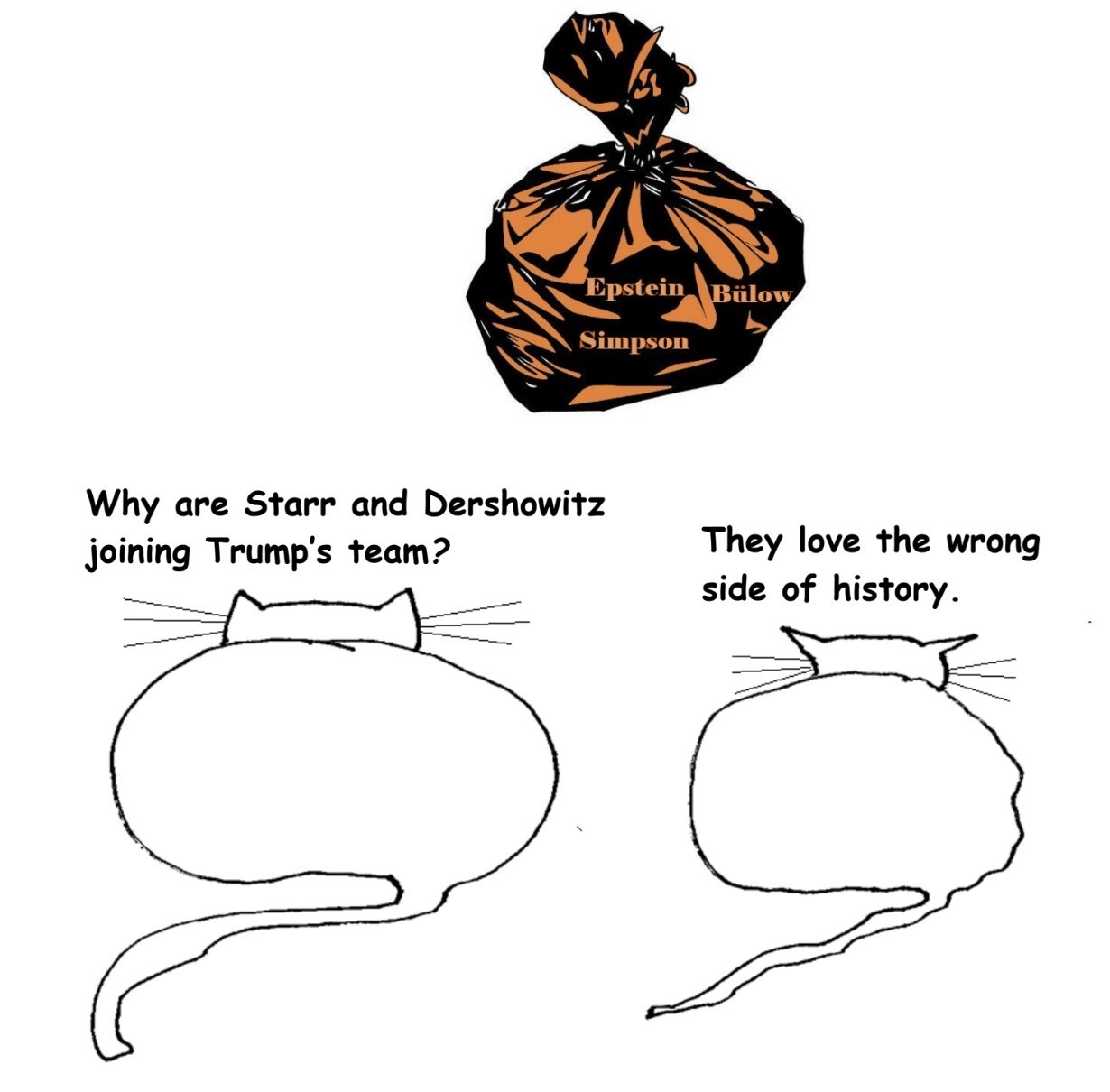
by Charlie Huenemann
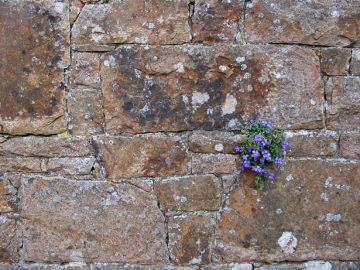 We find ourselves always in the middle of an experience. But it’s what we do next – how we characterize the experience – that lays down a host of important and almost subterranean conditions. Am I sitting in a chair, gazing out the dusty window into a world of sunlight, trees, and snow? Am I meditating on the nature of experience? Am I praying? Am I simply spacing out? Depending on which way I parse whatever the hell I’m up to, my experience shifts from something ineffable (or at any rate, not currently effed) to something meaningful and determinate, festooned with many other conversational hooks and openings: “enjoying nature”, “introspecting”, “conversing with God”, “resting”, “procrastinating”, and so on. Putting the experience into words tells me what to do with it next.
We find ourselves always in the middle of an experience. But it’s what we do next – how we characterize the experience – that lays down a host of important and almost subterranean conditions. Am I sitting in a chair, gazing out the dusty window into a world of sunlight, trees, and snow? Am I meditating on the nature of experience? Am I praying? Am I simply spacing out? Depending on which way I parse whatever the hell I’m up to, my experience shifts from something ineffable (or at any rate, not currently effed) to something meaningful and determinate, festooned with many other conversational hooks and openings: “enjoying nature”, “introspecting”, “conversing with God”, “resting”, “procrastinating”, and so on. Putting the experience into words tells me what to do with it next.
Buber claims that the deepest and most immediate setting we establish in characterizing our experience is whether it falls into one or another mode: that of the “I/It” or that of the “I/Thou”. (Think of a toggle switch at the base of your mind, with two settings.) On the I/It setting, I am experiencing It: “I perceive something. I feel something. I want something. I sense something. I think something.” A curtain is drawn between two countable collections, and typically there is one thing on one side (me, or you), and one or more things on the other. Toggling into this setting means you are getting serious about getting something done or making something known. You will see whether you have enough butter and eggs to make the cookies. You are an agent, one who does. And the entities you are doing unto are patients, or the pieces in your game.
We should resist any temptation to underestimate the scope of I/It. It underlies nearly everything we do – no, everything, since “we do it” is an I/It formulation. To the extent that we think, sense, know, understand, or do anything, it is on this setting. Indeed, we might well wonder what other setting there could possibly be. Read more »